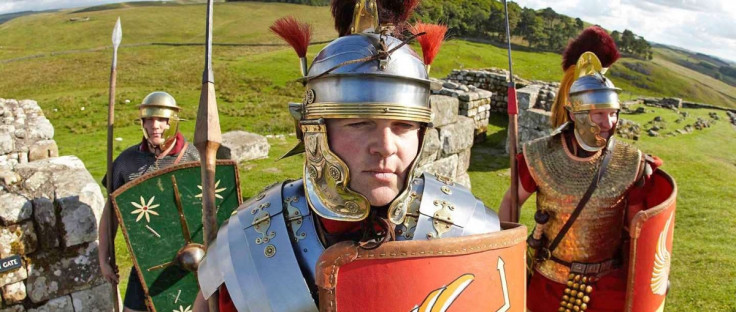World's largest re-enactment of Roman cavalry set for Hadrian's Wall

Archaeologists and historians are planning ancient Roman war games to take place between April and September 2017. The six-month exhibition, Hadrian and His Cavalry will shed light on the important role played by the cavalry of Imperial Rome.
Treasures from public and private collections amassed from around 10 museums around the world will form the bulk of the exhibition along the wall, which formed a 73-mile defensive barrier spanning from England's west coast to east coast. Among the exhibits will be highly decorated cavalry helmets and armour that protected the elite equestrian squadrons.
The Vindolanda tablets, found at a Roman auxiliary fort just south of Hadrian's Wall, are among the most important finds of military correspondence about the Roman Empire. They provide a unique insight into how the Romans viewed their enemies' capabilities.
"It's bling. Hadrian's cavalry was a showy part of the army, more highly decorated than the infantry's equipment. Think of the horseguards [today]. It's very much in that vein of looking the part," Bill Griffiths, head of programmes for Tyne & Wear Archives & Museums said.
The re-enactment will be based closely on the extant words of Hadrian, exhorting his troops into battle. "You shot stones from slings and fought with javelins; everywhere you jumped nimbly onto your horses," the emperor told his cavalry in one speech that has survived.
The cavalry was much admired by eyewitnesses, including the historian Arrian, writing in the second century AD. He served in the Roman Army and was appointed by the emperor Hadrian to be legate (ruler) of the province of Cappadocia (131-137 AD) in what is now modern-day Turkey. He wrote: "From the helmets hang plumes of yellow hair, not for any practical purpose but to make a fine show. When the horses charge, if there happens to be even a slight breeze, they present a splendid spectacle."
Dr Jon Coulston of the University of St Andrews, a leading academic on military equipment and the Roman army, told the Guardian: "The objects are to die for – visually gorgeous. The Roman army is probably the sexiest area of Roman archaeology as far the public is concerned."
© Copyright IBTimes 2025. All rights reserved.






















